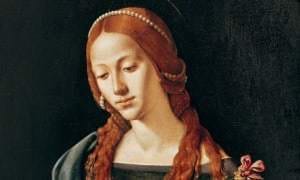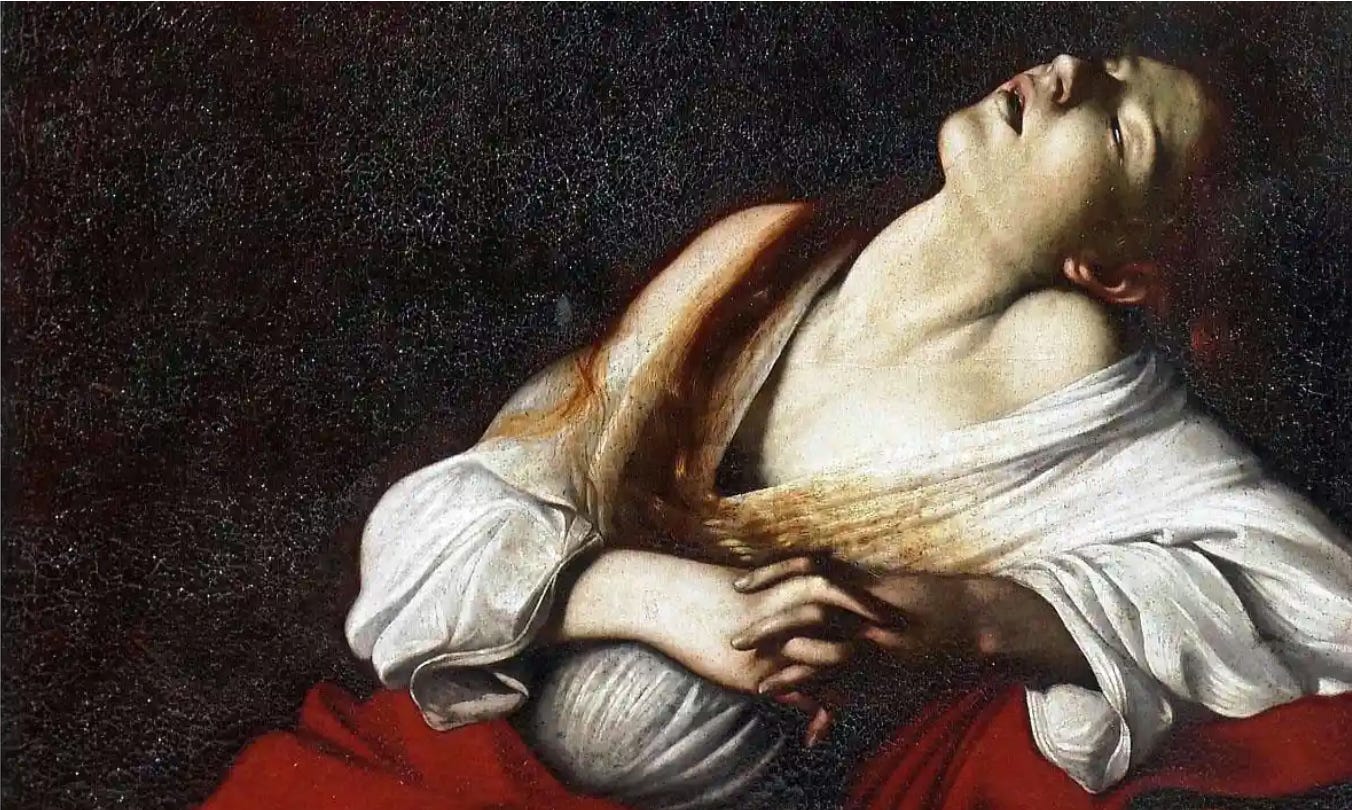“Women have been handed a very limited and often unhealthy spirituality and need some theological therapy of the religious imagination.” - Sister Sandra M. Schneiders, Women and the Word
Hey friends - So this week (Thursday, November 17 @7:00 CST) I’m presenting at the Women’s Collective at The Gathering Methodist Church here in St.Louis (Clayton site 101 N.Bemiston). You are all welcome to come.. women, people who identify as female or non-binary or people who feel most comfortable in spaces with women. You can come in person or join us online on Zoom. So even for you out of town folk, you are welcome to join!
The talk started out of my experience in my Bible Interpretation class at Aquinas Institute when my professor was teaching us about Narrative Criticism and using the prevalence of well stories in the Old Testament as an example. I noticed that as a symbol, the well seemed like a close sister to her vertical twin, the tomb. I was curious what might happen if we linked these narratives? And as these symbols feel decidedly feminine, might there be other narratives that tell a bigger, fuller story of the divine feminine in scripture?
In our paper for the course we needed to explicate a piece of text, and I chose the troubling verse from Paul’s epistle I Timothy 2:15, “But women will be saved through childbearing—if they continue in faith, love and holiness with propriety.” A troubling verse, to say the least, that I’ve (not surprisingly) never heard a sermon take on. I hope where I end up in my talk is to make clear that Jesus redefines childbearing, as Jesus redefined so many ideas around family, community and tradition.
Your understanding about Mary Magdalene may be limited to Dan Brown’s The DaVinci Code books and the ideas around Mary being Jesus’ wife. While I do enjoy thinking about this possibility because it feels like a meditation on Jesus’ full humanity, I think our need to make Mary a wife is as misguided as making Paul’s statement about childbearing a statement about literally giving birth to children.
The legacy of Mary Magdalene is a key thread in my book. The “wife of Jesus,” in many ways, is a construct that we’ve invented in the last decade, a cultural symbol that has emerged quite recently in our collective imagination.
This development provides an interesting mirror for the Christianized West—Magdalene’s legacy illustrates much more about us than it reveals about her as a historical figure. Mary’s 2000-year evolution from disciple, to obscurity, to prostitute, to royalty, to girlfriend, to wife reflects our sexual fascinations at almost every turn.
Unfortunately, our imaginations have not been kind to Mary. I think that it is noteworthy that Mary stands alone as an independent figure when she is characterized in the Gospels. She is not the wife of somebody or the mother of somebody. - Anthony LeDonne on his book, The Wife of Jesus: Ancient Texts and Modern Scandals. from an interview with Pete Enns on The Bible for Normal People
Mary Magdalene, who stands as an independent woman in scripture is rather the pinnacle of midwifery, a woman who witnesses the radical transformation of spiritual growth, birth and re-birth. It is through these narratives around wells, wombs, and tombs that Mary called Magdalene, or Mary the Tower, as perhaps Jesus named her, becomes the lineage bearer to the divine feminine of Jesus’ ministry.
I hope you’ll join me on Thursday!
The Gathering 101 N.Bemiston 63105
Other books to consider:
The Meaning of Mary Magdalene: Discovering the Woman at the Heart of Christianity by Cynthia Bourgeault
Mary Magdalene Revealed: The First Apostle, Her Feminist Gospel & the Christianity We Haven't Tried Yet by Meggan Watterson
Magdalene: Poems by Marie Howe
Magdalene—The Seven Devils
“Mary, called Magdalene, from whom seven devils had been cast out”
Luke 8:2
The first was that I was very busy.
The second—I was different from you: whatever happened to you could
not happen to me, not like that.
The third—I worried.
The fourth—envy, disguised as compassion.
The fifth was that I refused to consider the quality of life of the aphid,
The aphid disgusted me. But I couldn’t stop thinking about it.
The mosquito too—its face. And the ant—its bifurcated body.
Ok the first was that I was so busy.
The second that I might make the wrong choice,
because I had decided to take that plane that day,
that flight, before noon, so as to arrive early
and, I shouldn’t have wanted that.
The third was that if I walked past the certain place on the street
the house would blow up.
The fourth was that I was made of guts and blood with a thin layer
of skin lightly thrown over the whole thing.
The fifth was that the dead seemed more alive to me than the living
The sixth—if I touched my right arm I had to touch my left arm, and if I
touched the left arm a little harder than I’d first touched the right then I had
to retouch the left and then touch the right again so it would be even.
The seventh—I knew I was breathing the expelled breath of everything that
was alive, and I couldn’t stand it.
I wanted a sieve, a mask, a, I hate this word—cheesecloth—
to breath through that would trap it—whatever was inside everyone else that
entered me when I breathed in.
No. That was the first one.
The second was that I was so busy. I had no time. How had this happened?
How had our lives gotten like this?
The third was that I couldn’t eat food if I really saw it—distinct, separate
from me in a bowl or on a plate.
Ok. The first was that. I could never get to the end of the list.
The second was that the laundry was never finally done.
The third was that no one knew me, although they thought they did.
And that if people thought of me as little as I thought of them then what was
love?
The fourth was I didn’t belong to anyone. I wouldn’t allow myself to belong
to anyone.
The fifth was that I knew none of us could ever know what we didn’t know.
The sixth was that I projected onto others what I myself was feeling.
The seventh was the way my mother looked when she was dying,
the sound she made—her mouth wrenched to the right and cupped open
so as to take in as much air… the gurgling sound, so loud
we had to speak louder to hear each other over it.
And that I couldn’t stop hearing it—years later—grocery shopping, crossing the street—
No, not the sound—it was her body’s hunger
finally evident—what our mother had hidden all her life.
For months I dreamt of knucklebones and roots,
the slabs of sidewalk pushed up like crooked teeth by what grew underneath.
The underneath. That was the first devil. It was always with me
And that I didn’t think you—if I told you—would understand any of this—
Copyright © 2008 by Marie Howe.







I wish I could make this! Will the Zoom be recorded for viewing later? Also, if I could be heretical, I'll add to your list of recommendations The Gospel Of Mary Magdalene. There are two translations I like, the first by Karen L. King, the second by Jean-Yves Leloup.
This is at the Clayton site 101 N. Bemiston 63105